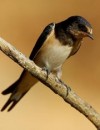Gregg Treinish, a man whose hiking credentials include a stroll along most of the Andes, took part in the Appalachian Trail Days event last weekend with an unusual sense of purpose. On a previous hike, he “felt selfish and … realized that was a shared feeling amongst hikers and mountaineers,” Treinish says. That feeling, together with a stint studying wildlife biology at Montana State University, gave him an original idea: to offer adventurers the opportunity to share with scientists something that even those who travel light routinely take with them on their adventures: their eyes and ears. Now, wherever he goes, Treinish recruits fellow adventurers for his new organization, Adventurers and Scientists for Conservation (ASC). Continue reading Matching Scientists with Adventurers
All posts by LL
Swiss Scientists Design a Turbine to Fit in Human Arteries
Coaches admire athletes for showing a lot of heart, and poets praise the organ’s passions, but engineers see the human cardiovascular system otherwise. The heart is a pump in a prime location, brimming with energy for the taking, says biomedical engineer Alois Pfenniger. So together with colleagues at the University of Bern and the Bern University of Applied Sciences, in Switzerland, Pfenniger has tested small turbines designed to fit inside a human artery, like an implantable hydroelectric generator. Continue reading Swiss Scientists Design a Turbine to Fit in Human Arteries
Australian Government Silent on Synchrotron Budget While Scientists Plan Expansion
One might think that the managers of the Australian Synchrotron would be panicking given the news that neither the federal government nor the Victoria state government has addressed in their just-released budget proposals how the facility will be funded beyond June 2012, when its original 5-year financial plan ends. After all, the two governments currently provide most of the synchrotron’s annual funding. Yet, at least publicly, those running the synchrotron are thinking not about how to save the young facility but how to grow it. “We are now in the process of wanting to expand,” says Andrew Peele, a physicist at La Trobe University in Victoria who has been head of science at the synchrotron since late last year. Continue reading Australian Government Silent on Synchrotron Budget While Scientists Plan Expansion
When being colourful doesn’t pay
 Nuclear accidents can have devastating consequences for the people and animals living in the vicinity of the damaged power plants, but they also give researchers a unique opportunity to study the effects of radiation on populations that would be impossible to recreate in the lab.
Nuclear accidents can have devastating consequences for the people and animals living in the vicinity of the damaged power plants, but they also give researchers a unique opportunity to study the effects of radiation on populations that would be impossible to recreate in the lab.
Tim Mousseau, who directs the Chernobyl Research Initiative at the University of South Carolina in Columbia, together with an international team, is studying the long-term ecological and health consequences of the 1986 accident at the Chernobyl nuclear power plant in the Ukraine. Mousseau has been studying Chernobyl since 1998 and his latest work, carried out with colleagues in France and published in Oecologia last month, finds that bird species with orange feathers living in the fallout zone seem to be more susceptible to radiation than their drabber gray and black fellows. They suggest that production of the more colourful pigments consumes antioxidant molecules that would otherwise confer protection against radiation damage, and that this molecular trade-off is shaping bird populations around the former nuclear power plant.
Continue reading When being colourful doesn’t pay